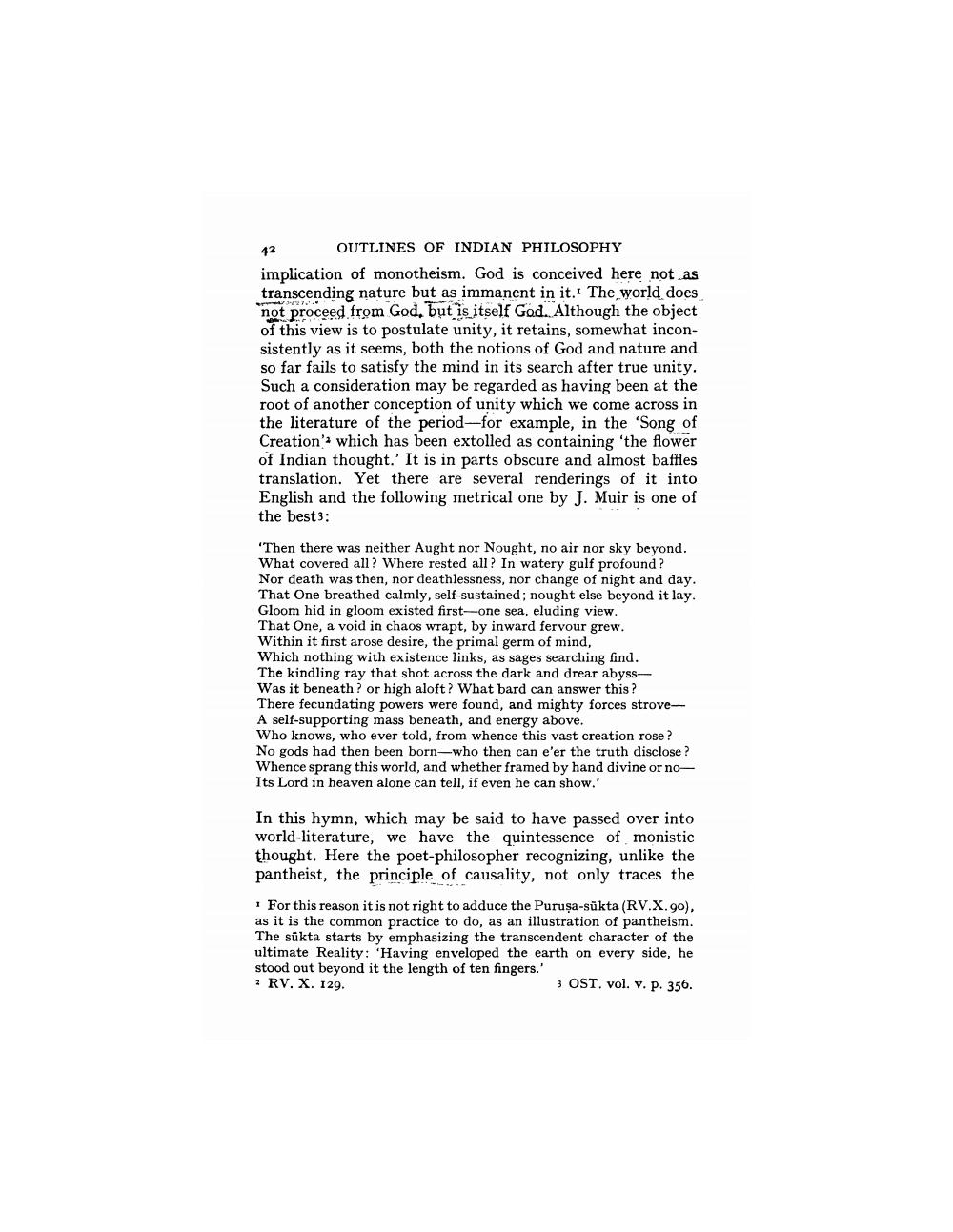________________
OUTLINES OF INDIAN PHILOSOPHY implication of monotheism. God is conceived here not as transcending nature but as immanent in it. The world does not proceed from God, but is itself God. Although the object of this view is to postulate unity, it retains, somewhat inconsistently as it seems, both the notions of God and nature and so far fails to satisfy the mind in its search after true unity. Such a consideration may be regarded as having been at the root of another conception of unity which we come across in the literature of the period--for example, in the 'Song of Creation which has been extolled as containing 'the flower of Indian thought.' It is in parts obscure and almost baffles translation. Yet there are several renderings of it into English and the following metrical one by J. Muir is one of the best 3:
"Then there was neither Aught nor Nought, no air nor sky beyond. What covered all? Where rested all? In watery gulf profound ? Nor death was then, nor deathlessness, nor change of night and day. That One breathed calmly, self-sustained; nought else beyond it lay. Gloom hid in gloom existed first one sea, eluding view. That One, a void in chaos wrapt, by inward fervour grew. Within it first arose desire, the primal germ of mind, Which nothing with existence links, as sages searching find. The kindling ray that shot across the dark and drear abyssWas it beneath? or high aloft? What bard can answer this? There fecundating powers were found, and mighty forces stroveA self-supporting mass beneath, and energy above. Who knows, who ever told, from whence this vast creation rose ? No gods had then been born-who then can e'er the truth disclose ? Whence sprang this world, and whether framed by hand divine or no Its Lord in heaven alone can tell, if even he can show.'
In this hymn, which may be said to have passed over into world-literature, we have the quintessence of monistic thought. Here the poet-philosopher recognizing, unlike the pantheist, the principle of causality, not only traces the
· For this reason it is not right to adduce the Purusa-sūkta (RV.X. 90), as it is the common practice to do, as an illustration of pantheism. The sūkta starts by emphasizing the transcendent character of the ultimate Reality: 'Having enveloped the earth on every side, he stood out beyond it the length of ten fingers.' RV. X. 129.
3 OST. vol. v. p. 356.




